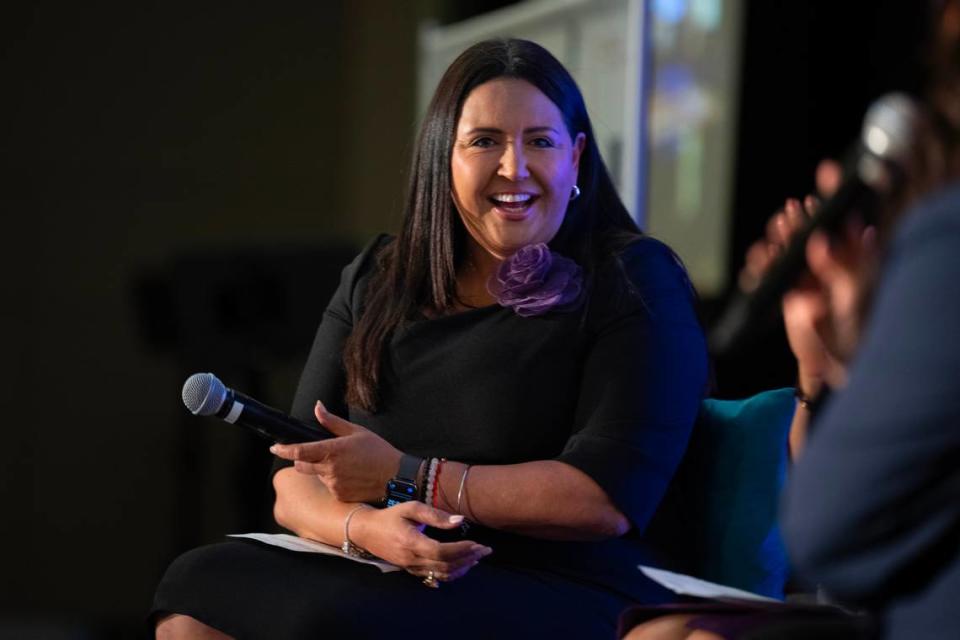‘Latina Action Day’ illuminates progress, what’s ahead for California’s growing demographic
Hundreds of women gathered Tuesday in Sacramento for the annual “Latina Action Day,” a day dedicated to lifting up Latinas at statewide policy-making tables.
The day centers around a conference that facilitates dialogue between corporate and community Latina leaders and elected officials.
Now in its 29th year, the event is hosted by the Los Angeles-based nonprofit, Hispanas Organized for Political Equality (HOPE), with a goal of mobilizing Latinas to amplify their voices on issues impacting their communities.
“Latinas in California lead with equity and racial justice in mind, and when we reach positions of power we always put community first,” said Assemblymember Wendy Carrillo, D-Los Angeles, to the crowd of nearly 500 Latinas.
Held at SAFE Credit Union Convention Center, the conference is crucial as the Latina population continues to grow and become more linked with the success of the state, said Helen Torres, CEO of HOPE.
California has the largest Latina population in the nation, close to 8 million. “When you consider the size and magnitude of our state, and the fact that Latinas are close to 20% of the population in this state, we need to ensure that Latinas are weighing in during this critical time in California,” said Torres.

Setting priorities
The first half of Tuesday’s event centered on legislation, with an array of speakers highlighting proposals deemed “2023 legislative priorities” by HOPE.
Torres said the measures are reflective of the organization’s 30 year history and four areas of focus: healthcare access, educational attainment, economic development and civic engagement and civil rights.
This year’s priorities included lowering barriers for youth on Medi-Cal to access mental health treatment, data collection of dual-language learners and requiring the reporting of gubernatorial appointees’ demographic data.
“Every one of our legislators have Latinas in their district,” Torres said. “So they need to hear from us, they have a responsibility to hear our stories and listen to our suggestions when it comes to legislation.”
Speakers also highlighted the strategies needed to continue strengthening the Latina leadership pipeline. They cited a 2022 HOPE report that found Latinas have made progress at securing new positions of leadership, particularly in the public and non-profit sectors.
“We’re here to talk about Latina leadership, which is really American leadership, said Sonja Diaz, founding director of the UCLA Latino Policy and Politics Institute.
Carrillo ended her speech by sharing inspirational quotes, citing Ruth Bader Ginsburg, Eleanor Roosevelt, Margaret Thatcher, Dolores Huerta and Michelle Obama. Her final piece of advice centered on confidence.
“Let’s face it, sometimes women and Latinas, women of color, we doubt ourselves more than we should. And the advice is to walk into a room with the confidence of a mediocre white man,” she said.
The conference follows recent achievements for California Latinas.
The state Legislature reached a record 23 Latinas last year. Assemblymember Sabrina Cervantes, D-Riverside, is currently the third consecutive woman who is leading the California Latino Caucus. And in January, Patricia Guerrero made history as the first Latina to serve as California’s Chief Justice.
The progress should be recognized, but is not a reason to stop moving forward, said Torres.
“It’s time to double our efforts and investment in Latina leadership,” she said. “Latinas are the current and future leaders for the state.”

